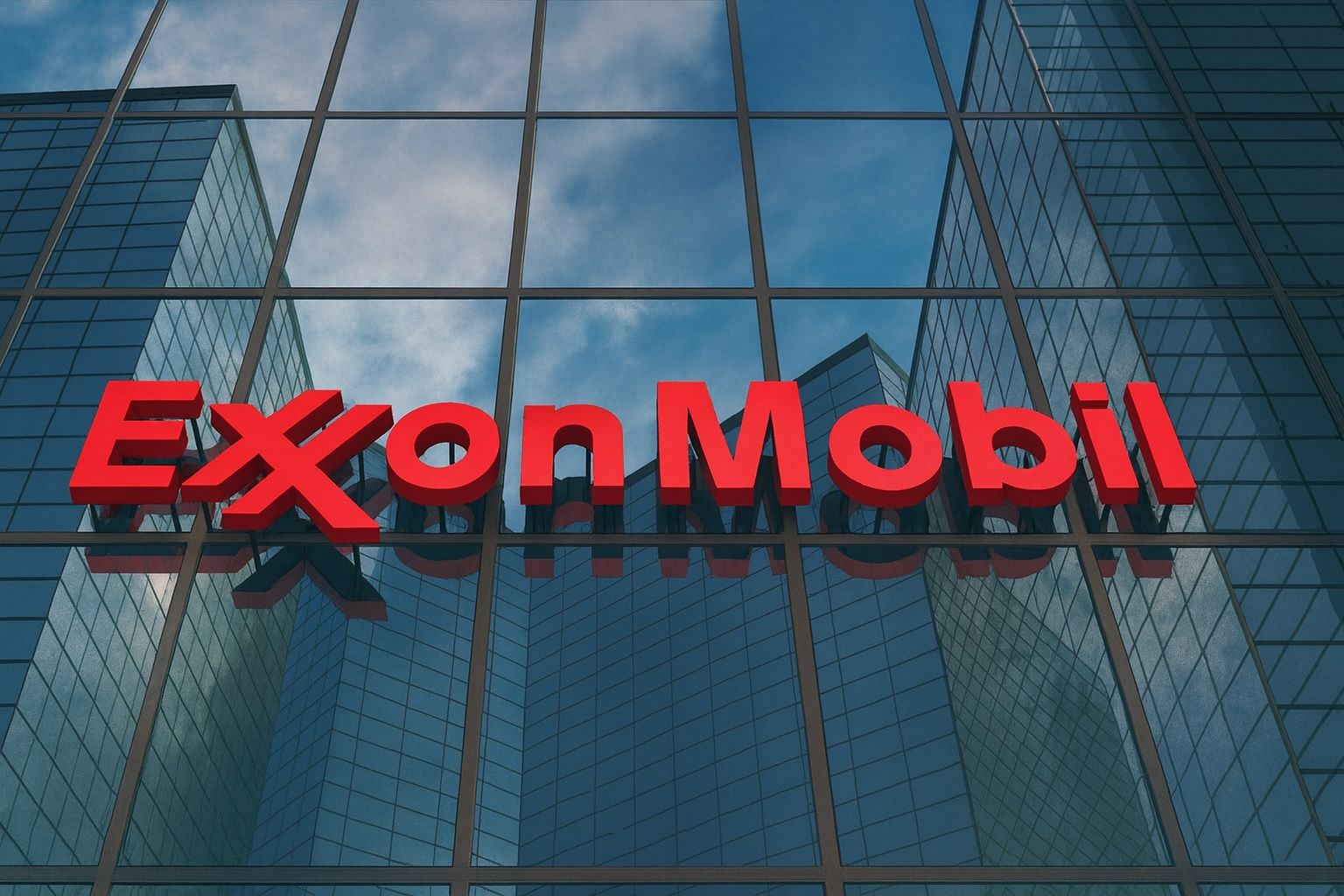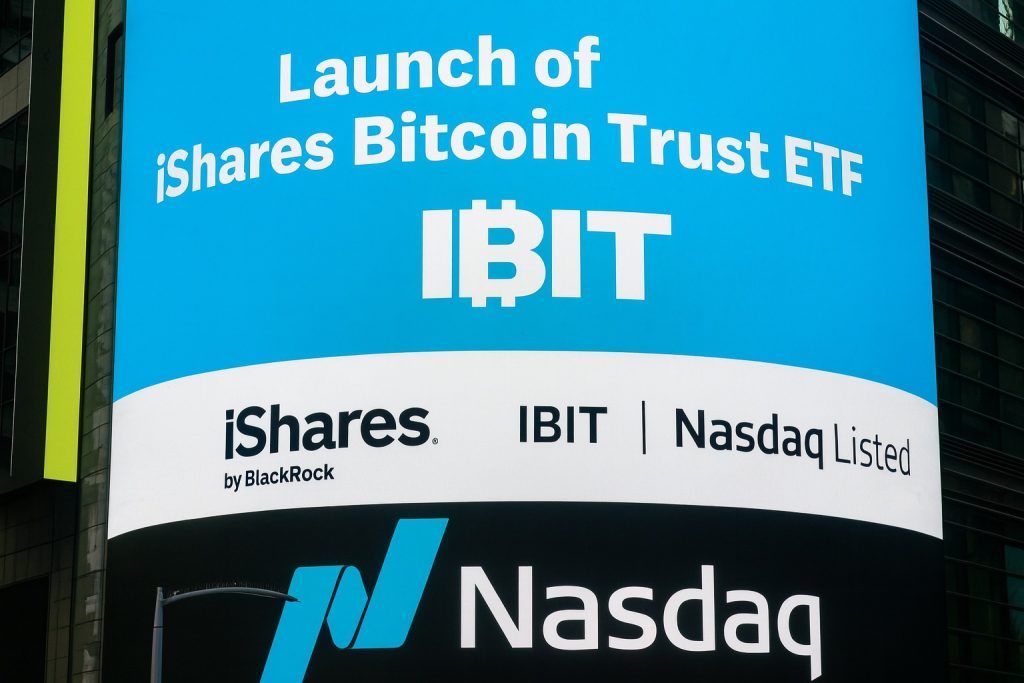- Price & Range: As of Oct 17, 2025, Exxon Mobil (XOM) shares closed around $112.24 [1], near the middle of a 52-week range (~$97.80–$123.21 [2]). Over the last few trading days (Oct 10–17), XOM traded roughly between $110 and $114, reflecting mixed moves in energy stocks [3] [4].
- Analyst Ratings: On Oct 18, Wells Fargo upgraded XOM to a “Strong Buy” [5]. Analysts remain divided: Mizuho recently cut its target to $123 (Neutral) while TD Cowen lifted its target to $128 (Buy) [6]. Overall, MarketBeat reports a consensus “Moderate Buy” rating with an average price target around $127.6 [7].
- Oil Market Plunge: U.S. crude prices hit five-year lows (WTI ~$57/barrel [8]) amid fears of a growing glut. Gasoline prices are also down (just above $3/gal) [9]. Major forecasters (EIA, BofA) now see Brent crude closer to $61–62 by year-end, with downside risk (below $50) if trade wars or surplus worsen [10] [11].
- Corporate Moves: Exxon announced a preliminary deal with Iraq to develop the giant Majnoon oilfield, signaling a return to the country [12]. Iraqi leaders touted the deal’s scale (Majnoon ~38 billion barrels) and its political significance. Separately, Exxon plans a major restructuring (cutting ~2,000 jobs globally [13]) to improve efficiency.
- Market Outlook: Oil analysts warn of an “unprecedented” 4 mbpd surplus in 2026 [14], pressuring energy stocks. U.S. oil majors (like XOM) have held up better than smaller producers, thanks to strong cash flow [15]. CEO Darren Woods insists current oversupply is “likely to be a short-term issue,” betting long-term demand will tighten [16] [17]. Banks like BofA forecast range-bound oil (~$58–62) into 2026 [18], and many analysts see oil prices staying mostly in the $50s in the near term [19].
Recent Stock Performance
Exxon Mobil’s stock has been relatively steady in mid-October. After closing at about $112.24 on Oct. 17 [20], the shares are near their 50-day and 200-day moving averages (~$111 [21]). That recent price places XOM roughly flat for October and slightly up year-to-date (~+6.5% YTD, vs down ~3% over 12 months [22]). (A Simply Wall St analysis noted XOM closed around $114.26 on Oct 8, up 4.6% that month [23].)
After a late-summer rally in oil, crude prices plunged again: WTI dipped under $59 recently (a five-month low) [24], prompting energy stocks to lag. In the week of Oct 4–5, U.S. oil fell about 7% [25], and “major oil-producers like Exxon Mobil… saw their shares tick down for most of the week,” notes TechStock² [26]. On Oct 17, XOM actually climbed modestly (+1.45% that day [27]) as headlines (see below) drew investor attention. Overall, XOM’s volatility has been lower than crude’s: analysts note that diversified oil majors with strong balance sheets (including Exxon) have held up “better than many expected” even as oil prices fall [28].
Analyst Commentary and Upgrades
Investors got a boost when Wells Fargo upgraded Exxon to “Strong-Buy” on Oct. 18 [29]. MarketBeat explains that several firms are tweaking forecasts: for example, Morgan Stanley recently raised its price target from $134 to $135 (maintaining an Overweight rating) [30]. Across Wall Street, “two… analysts have rated the stock with a Strong Buy rating, eight have given it a Buy and ten a Hold,” for an average “Moderate Buy” consensus and target near $127.58 [31].
On these fundamentals, XOM trades at a P/E around 16 and yields about 3.4%, making it a cornerstone of many dividend portfolios. Many analysts note Exxon’s solid cash flow and integrated model. BMO Capital’s Phillip Jungwirth, for example, comments on Exxon’s cost cuts: “the structural cost saving [from its restructuring]… [is] expected to be a tailwind, but could be offset by higher expenses” [32]. Banks and brokerage houses emphasize XOM’s defensive qualities: its strong H1 2025 free cash flow (~$23 billion [33]) and its diversified earnings (upstream oil production vs. refining margins) can buffer shocks. As one analyst put it, Exxon’s long-term outlook benefits from “the oil market [being] expected to tighten… making meeting global energy demand more challenging” [34].
Nonetheless, near-term estimates have moved lower with falling commodities. Reuters notes that Wall Street forecasts see Exxon earning about $1.79 EPS in Q3 2025, with results due Oct. 31 [35]. With oil weak, these quarterly profits could slip, though Exxon expects some offset: its recent filing projected that refining margins might boost Q3 results by $300–$700 million over Q2 [36]. Overall, 2025/26 estimates remain in flux: Zacks reports analysts cutting out-year EPS targets modestly (for example, FY2027 EPS down to $10.37) [37].
Oil Market Trends and Impact
Global oil market turmoil is the backdrop. U.S. benchmark crude (WTI) recently hovered around $57–59/barrel, the weakest in years [38]. This slump is driven by soaring supply and weakening demand growth. OPEC+ countries (led by Saudi/Russia) continue to add output: in early October they agreed to another 137,000 bpd hike for November [39], on top of increases earlier this year. At the same time, U.S. shale production is near record highs (≈13.6 mbpd [40]).
Demand concerns are equally acute. Renewed U.S.–China trade tensions spooked traders in mid-October: President Trump’s threat of 100% tariffs on additional Chinese goods triggered a $3 rally to sink quickly after the announcement [41] [42]. Goldman Sachs warns these trade woes could “crush oil demand,” potentially shaving nearly 0.8 mbpd from growth [43] [44]. The International Energy Agency now forecasts an “unprecedented” ~4 mbpd surplus in 2026 if current trends persist [45].
Energy analysts and executives take note. Chevron’s Vicki Hollub expects oil to stay “range-bound” around $58–62 through 2026 [46]. Occidental’s CEO similarly says oil may remain near $58–62 [47]. Exxon’s CEO Darren Woods (at an Oct. 13 forum) echoed this caution – calling today’s glut “likely to be a short-term issue” [48] [49] – but warned that without new investment old fields could see annual declines up to 15% [50] [51].
Lower oil has helped ease inflation (gas prices are the cheapest since early 2025 [52]) and provided a mild tailwind for many industries. But it also means weaker cash flow for oil companies. As TechStock² notes, “North American oil stocks have held up” because majors are well-capitalized [53], yet cheaper oil has “hit energy sector stocks” overall [54]. In Europe, firms like BP and TotalEnergies have started trimming share buybacks in response to cheap crude [55].
Geopolitical and Macro Factors
Big-picture political and economic forces are at play. A major development for Exxon is its Iraq Majnoon agreement. On Oct. 8, the Iraqi government and Exxon signed a non-binding deal to revive the Majnoon oilfield (with ≈38 billion barrels in place) and upgrade export facilities [56] [57]. This marks Exxon’s re-entry into Iraq after a multi-year exit, and points to potential new growth. Exxon hailed the deal: an Exxon spokesperson said “we are pleased to have signed a Heads of Agreement with the Iraqi Oil Ministry to evaluate exploration, development and oil marketing opportunities in Iraq” [58]. Analysts observe that this agreement “carries political weight”, signaling Iraq’s intent to deepen ties with western energy markets [59].
Trade policy is another macro wildcard. The sudden fear of a renewed tariff war between the U.S. and China rattled markets (as seen by the oil dip on Oct. 10). Continued or escalating tariffs could suppress global growth and oil demand. On the flipside, any thaw (or actual tariff cuts) might boost demand expectations, putting upward pressure on prices. OPEC+ policy remains a flashpoint too: some Gulf producers have recently held back from much larger output hikes, but any shift (deeper cuts or bigger increases) could swing prices quickly [60].
On the economic front, Federal Reserve policy has indirectly influenced Exxon. Lower interest rates (markets are pricing in rate cuts by year-end [61]) tend to buoy stock markets broadly, which can support energy shares. Conversely, a stubbornly strong dollar (so far in 2025) tends to pressure commodity prices. For Exxon specifically, the broader trend toward clean energy is a background theme, but near-term earnings remain tightly linked to oil and gas prices.
Outlook and Forecasts
Looking ahead, opinions diverge. Many Wall Street forecasts position Exxon as a steady outperformer if oil stabilizes. The consensus target (~$127–128) implies >10% upside from current levels [62]. Notably, Wells Fargo’s bullish $156 target (initiating “Overweight”) suggests some see even more room to run [63]. Some analysis (e.g. MarketMinute) notes scenarios where rising natural gas prices could significantly boost Exxon’s earnings and lift the stock into the $130s [64].
However, caution is common. Major forecasters expect oil to stay relatively low: the U.S. EIA projects Brent at ~$62 in Q4’25, falling to ~$52 in 2026 [65]. Bank of America’s baseline sees Brent around $61–64 but warns a full-blown trade war could drive it below $50 [66]. In this scenario, XOM’s earnings would face headwinds. Wall Street strategists generally advise investors to keep an eye on the same catalysts: trade negotiations, OPEC decisions, and Chinese demand data [67].
In summary, Exxon Mobil’s near-term stock trajectory hinges on volatile oil markets and upcoming results, even as its long-term outlook remains supported by strategic moves (like the Iraq deal) and diversification. As one analyst noted, energy firms expect profits to hold up for now due to cost cuts and refining gains, but “$50 oil or below would hit earnings significantly.” Investors should weigh these mixed signals – a strong balance sheet and dividend versus a challenging oil market – when deciding if now is the time to buy, hold, or trim Exxon Mobil stock [68] [69].
Sources: Recent company filings and news releases; Reuters (Oct 2025 reports) [70] [71] [72] [73]; TechStock² (TS2.tech) analysis [74] [75] [76] [77]; MarketBeat (18 Oct 2025) [78] [79]; MarketMinute/FinancialContent (17 Oct 2025) [80]; industry experts and analysts.
References
1. stockanalysis.com, 2. www.marketbeat.com, 3. stockanalysis.com, 4. www.marketbeat.com, 5. www.marketbeat.com, 6. www.marketbeat.com, 7. www.marketbeat.com, 8. ts2.tech, 9. ts2.tech, 10. ts2.tech, 11. ts2.tech, 12. www.reuters.com, 13. www.reuters.com, 14. ts2.tech, 15. ts2.tech, 16. ts2.tech, 17. www.reuters.com, 18. ts2.tech, 19. ts2.tech, 20. stockanalysis.com, 21. www.marketbeat.com, 22. simplywall.st, 23. simplywall.st, 24. ts2.tech, 25. ts2.tech, 26. ts2.tech, 27. stockanalysis.com, 28. ts2.tech, 29. www.marketbeat.com, 30. www.marketbeat.com, 31. www.marketbeat.com, 32. www.reuters.com, 33. ts2.tech, 34. www.reuters.com, 35. www.reuters.com, 36. www.reuters.com, 37. www.marketbeat.com, 38. ts2.tech, 39. www.reuters.com, 40. ts2.tech, 41. ts2.tech, 42. ts2.tech, 43. ts2.tech, 44. ts2.tech, 45. ts2.tech, 46. ts2.tech, 47. ts2.tech, 48. ts2.tech, 49. www.reuters.com, 50. ts2.tech, 51. www.reuters.com, 52. ts2.tech, 53. ts2.tech, 54. ts2.tech, 55. ts2.tech, 56. www.reuters.com, 57. www.reuters.com, 58. www.reuters.com, 59. www.reuters.com, 60. www.reuters.com, 61. ts2.tech, 62. www.marketbeat.com, 63. markets.financialcontent.com, 64. markets.financialcontent.com, 65. ts2.tech, 66. ts2.tech, 67. ts2.tech, 68. www.marketbeat.com, 69. www.reuters.com, 70. www.reuters.com, 71. www.reuters.com, 72. www.reuters.com, 73. www.reuters.com, 74. ts2.tech, 75. ts2.tech, 76. ts2.tech, 77. ts2.tech, 78. www.marketbeat.com, 79. www.marketbeat.com, 80. markets.financialcontent.com







